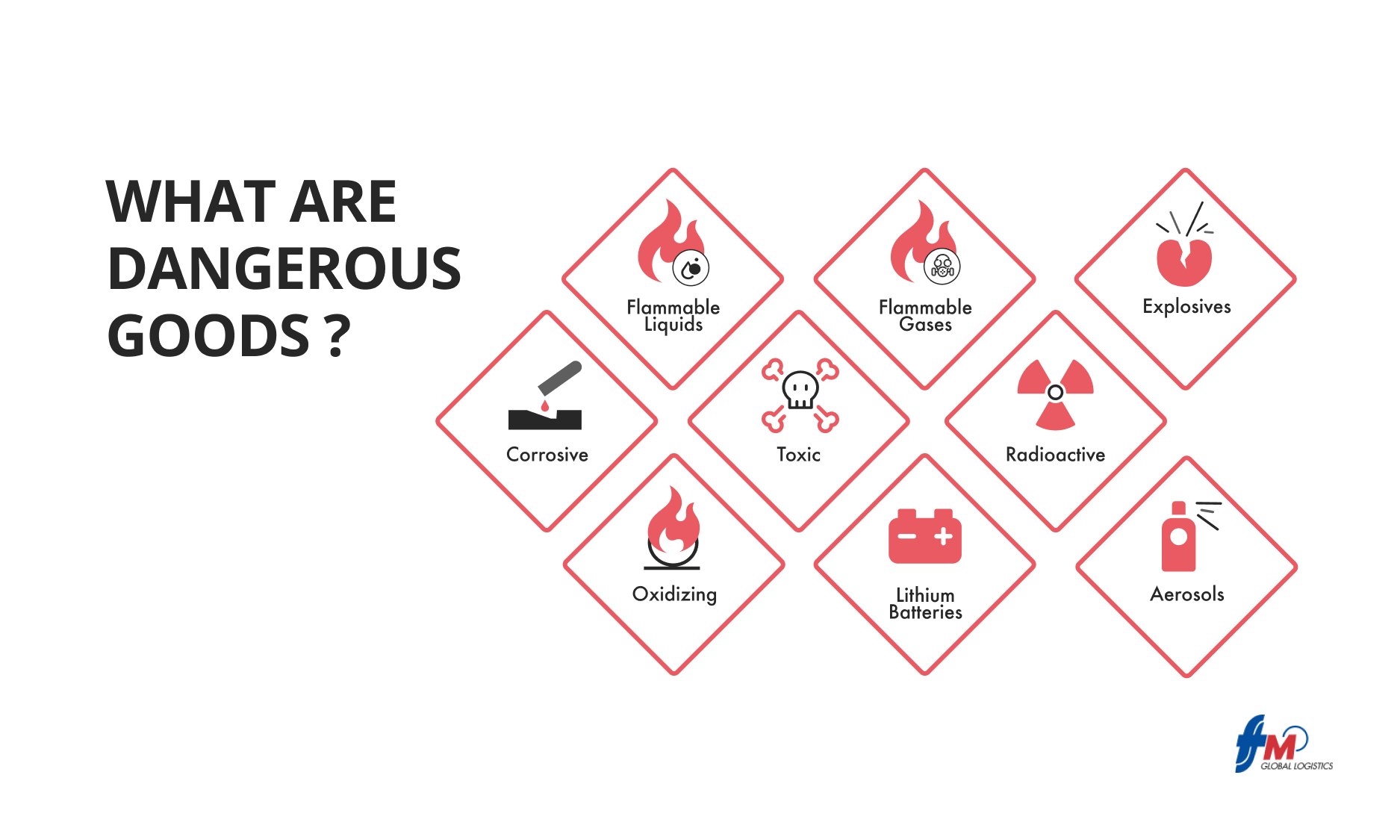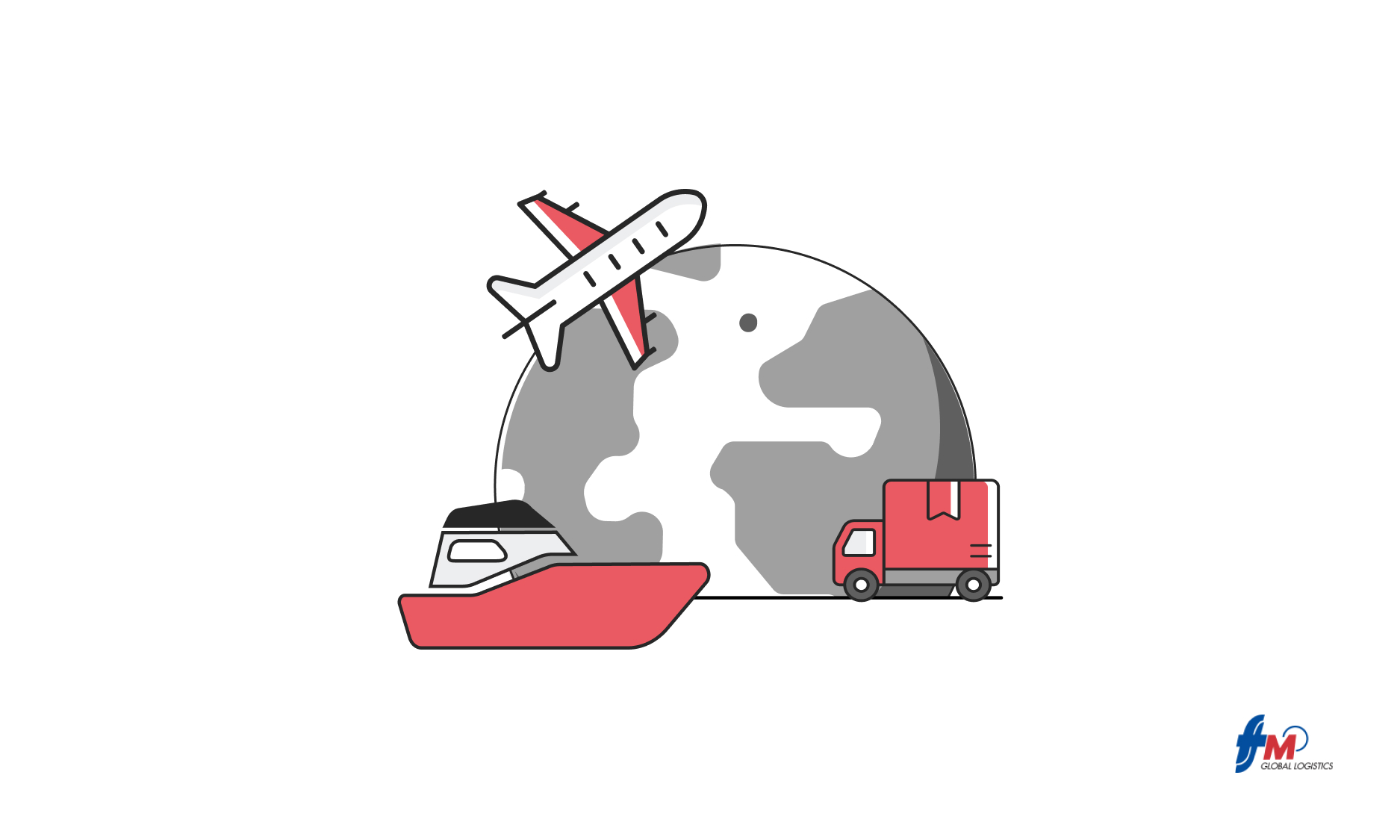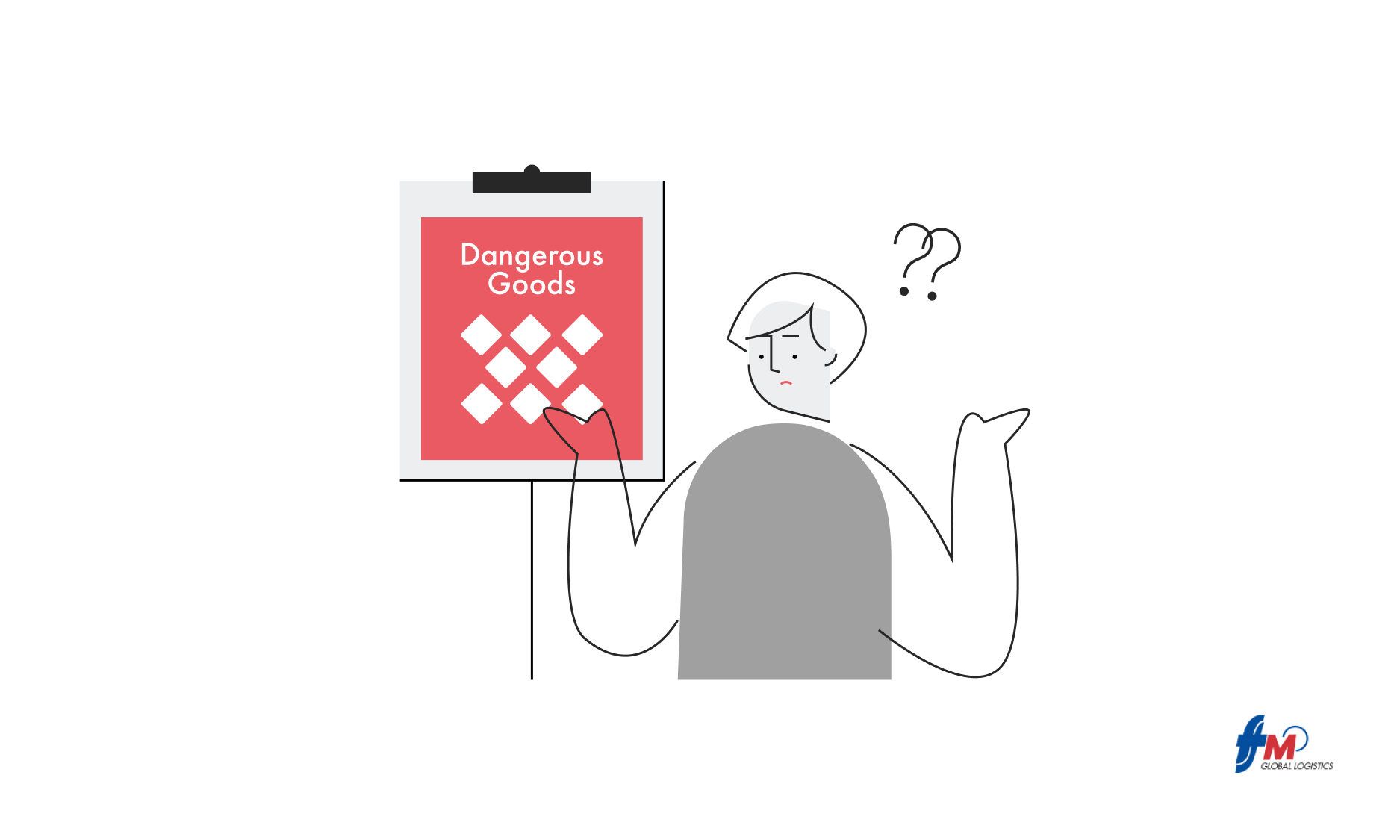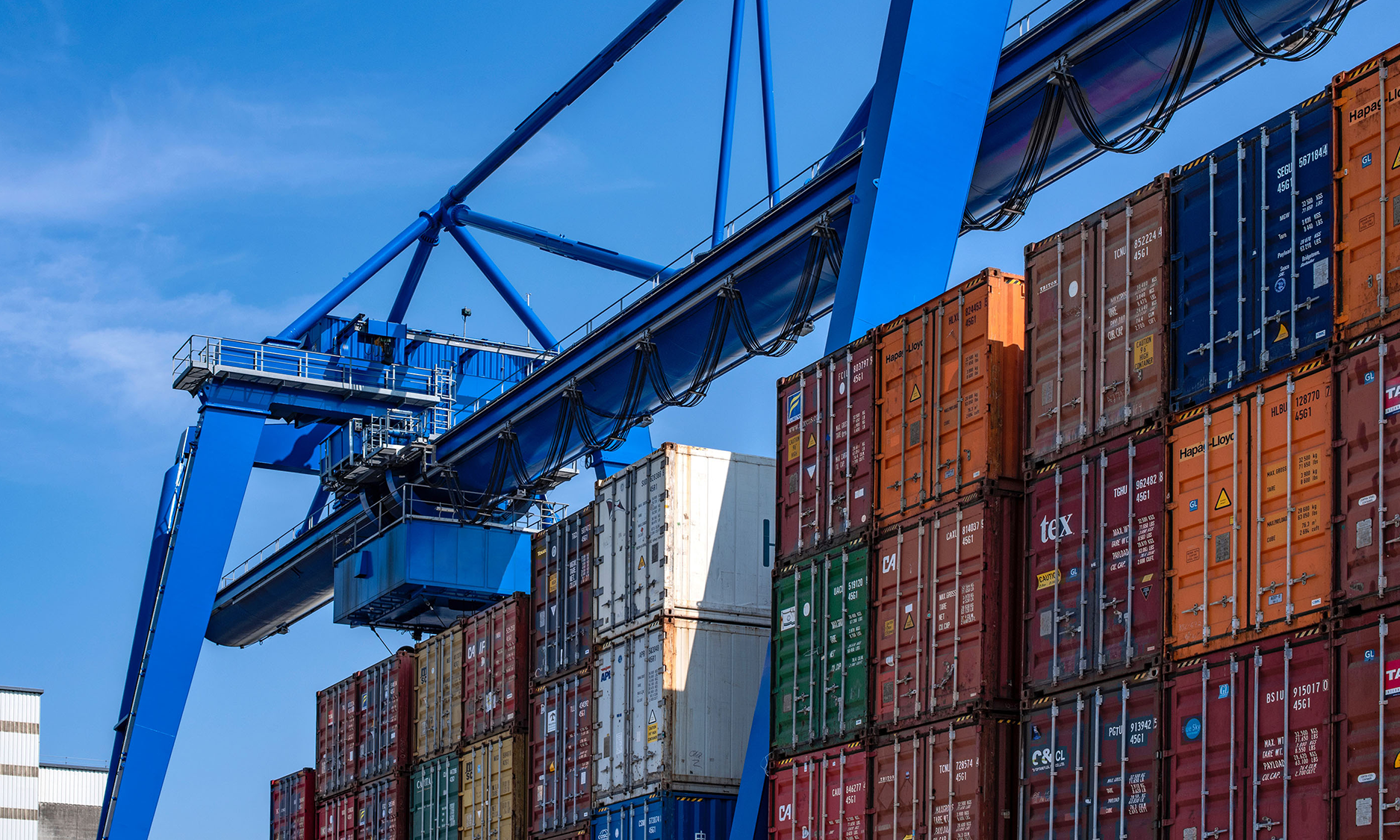Navigating the Safe Shipping of Dangerous Goods
01 August 2024When it comes to international shipping, certain goods require extra care and attention due to their potential hazards. These are known as dangerous or hazardous goods. In this article, we’ll explore what dangerous goods are, highlight key regulations internationally and within Malaysia, and discuss how shipping them can impact your business.
What Are Dangerous Goods?

Dangerous goods refer to substances or materials that, due to their chemical or physical properties, can cause harm to people, property, or the environment. These goods can range from flammable liquids and corrosive substances to explosives and toxic materials. It’s crucial to handle, store, and transport them safely to prevent accidents and protect everyone involved in the shipping process.
Here is a non-exhaustive list of some dangerous goods you may encounter in your business operations:
- Flammable Liquids: Examples include gasoline, alcohol, acetone, and paint thinner.
- Flammable Gases: This category includes propane, butane, methane, and aerosol cans.
- Explosives: Items like fireworks, ammunition, and blasting caps fall under this category.
- Corrosive Substances: Acidic or alkaline substances, such as sulfuric acid, hydrochloric acid, and sodium hydroxide, are considered corrosive.
- Toxic Substances: Toxic materials, such as pesticides, certain chemicals, and poisonous gases like hydrogen cyanide, are classified as dangerous goods.
- Radioactive Materials: Radioactive substances used in medical, industrial, or research applications, such as uranium, plutonium, and radioactive isotopes, require special handling and transport.
- Oxidizing Substances: These substances, like hydrogen peroxide and certain fertilizers, can promote or support the combustion of other materials.
- Infectious Substances: Biological materials, such as medical waste, diagnostic samples, and pathogens, are classified as dangerous goods due to their potential to cause disease.
- Aerosols: These are pressurized containers that release their contents as a spray, such as hairspray, deodorant, and insecticides, are considered dangerous goods.
- Lithium Batteries: Lithium-ion and lithium-metal batteries used in electronic devices are classified as dangerous goods due to their potential fire and explosion hazards.
What Regulations Do I Need To Know When Shipping Dangerous Goods?

In Malaysia, the transportation of hazardous goods is governed by several regulations. The key legislation you need to be aware of includes:
- Malaysian Occupational Safety and Health (Classification, Packaging and Labelling of Hazardous Chemicals) Regulations 1997: The Malaysian Occupational Safety and Health (Classification, Packaging and Labelling of Hazardous Chemicals) Regulations 1997, commonly known as CLASS Regulations, sets out requirements for the classification, packaging, labeling, and storage of hazardous chemicals. These regulations apply to a wide range of dangerous goods and establish guidelines for their safe handling and transportation.
- Malaysian Customs (Prohibition of Imports) Order 2017: The Malaysian Customs (Prohibition of Imports) Order 2017 prohibits the importation of certain dangerous goods into Malaysia. It is crucial to review this order to ensure that the goods you intend to ship are not on the prohibited list. Compliance with this regulation is essential to avoid customs issues and legal consequences.
- Department of Occupational Safety and Health (DOSH) Guidelines: The Department of Occupational Safety and Health (DOSH) in Malaysia provides guidelines for the safe transportation of hazardous substances. These guidelines cover various aspects, including packaging requirements, labeling, handling procedures, and emergency response planning. Adhering to these guidelines helps ensure the safe transport of dangerous goods within Malaysia.
- Department of Environment (DOE) Regulations: The Department of Environment (DOE) in Malaysia oversees environmental protection, including regulations related to the transportation of hazardous materials. It is essential to consult the DOE regulations to understand the specific requirements for transporting dangerous goods that may pose environmental risks. Compliance with these regulations helps protect the environment and prevent pollution incidents.
- Road Transport Department (JPJ) Regulations: The Road Transport Department (JPJ) in Malaysia regulates the transportation of dangerous goods on Malaysian roads. They provide guidelines for the proper labeling, placarding, and documentation of vehicles carrying hazardous materials. Compliance with these regulations is crucial to ensure the safety of drivers, other road users, and the integrity of the transportation process.
- Malaysian Marine Department (MARDEP) Regulations: The Malaysian Marine Department (MARDEP) regulates the transportation of dangerous goods by sea. They establish rules for the handling, stowage, and segregation of hazardous materials on vessels. Compliance with MARDEP regulations ensures the safety of maritime operations and protects the marine environment.
There are also several regulations that apply internationally that you will need to take note of, which include but are not limited to:
- International Air Transport Association (IATA) Dangerous Goods Regulations: The IATA Dangerous Goods Regulations provide guidelines for the safe transportation of dangerous goods by air. These regulations outline packaging, labeling, and documentation requirements specific to air transport. They also provide classification criteria for different types of dangerous goods and instructions for handling and emergency response.
- International Maritime Dangerous Goods (IMDG) Code: The IMDG Code is an internationally recognized set of regulations for the safe transport of dangerous goods by sea. It covers proper packaging, labeling, stowage, and segregation of dangerous goods on vessels. The code ensures that shipping containers and vessels are properly equipped to handle and transport hazardous materials safely.
- United Nations Recommendations on the Transport of Dangerous Goods: The United Nations Recommendations on the Transport of Dangerous Goods, also known as the UN Orange Book, provide a globally harmonized framework for the safe transport of dangerous goods. It includes classification criteria, packing instructions, and labeling requirements for different classes of dangerous goods. These recommendations serve as the basis for many national and international regulations.
- International Civil Aviation Organization (ICAO) Technical Instructions: The ICAO Technical Instructions for the Safe Transport of Dangerous Goods by Air is a comprehensive document that outlines regulations for the aviation industry. It covers the classification, packaging, and labeling of dangerous goods for air transport. These instructions ensure the safety of aircraft, passengers, and crew members.
- International Maritime Organization (IMO) SOLAS Convention: The International Convention for the Safety of Life at Sea (SOLAS), developed by the IMO, includes regulations for the safe transport of dangerous goods by sea. It specifies requirements for vessel construction, stability, and safety equipment to prevent accidents and protect the marine environment. Compliance with SOLAS ensures the safe loading, stowage, and handling of dangerous goods on ships.
How Will Shipping Dangerous Goods Affect My Business?

Shipping hazardous goods can significantly impact your business operations. Here are some key considerations to keep in mind:
- Compliance with Regulations: Adhering to dangerous goods regulations is not just a legal requirement but also a moral responsibility. Failure to comply can result in fines, penalties, delays, and reputational damage. It’s crucial to stay up to date with the specific regulations in Malaysia and ensure your business follows all necessary procedures.
- Safety of Personnel and the Public: The safe transportation of these goods are paramount to protect the well-being of your employees, transport personnel, and the general public. Proper handling, packaging, and labeling are essential to minimize the risk of accidents and ensure the safe arrival of goods.
- Insurance and Liability: Shipping these may also impact your insurance coverage and liability. It’s crucial to review your insurance policies to ensure adequate protection for your business, employees, and potential third-party damages. Non-compliance with regulations can also affect your liability in case of incidents or accidents during transportation.
- Additional Costs and Delays: Transporting dangerous goods may incur additional costs due to specialized packaging, labeling, and handling requirements. Compliance with regulations may also involve extra documentation and inspections, potentially causing shipment delays.
- Specialized Training and Expertise: Specialized knowledge and training is often required when shipping these types of goods. It’s essential to invest in proper training programs for your employees to ensure they understand the risks involved and know how to handle, store, and transport hazardous materials safely. This not only protects your workforce but also enhances operational efficiency and minimizes the likelihood of accidents.
- International Trade Considerations: If your business involves international trade, it’s important to understand that shipping hazardous goods may be subject to additional regulations and requirements in different countries. Each destination country may have its own set of rules and restrictions regarding the transportation of hazardous materials. It’s crucial to research and comply with these regulations to avoid complications, delays, or rejection of your shipments.
- Reputational Impact: In today’s interconnected world, businesses are under increased scrutiny regarding their environmental impact and safety practices. Failing to handle hazardous goods responsibly can have a negative impact on your reputation and brand image. Demonstrating a commitment to safety and compliance can enhance your reputation and build trust among customers and stakeholders.
How Do I Make Sure That My Business Stays Safe?
Navigating the complexities of shipping hazardous goods can be challenging. Partnering with an experienced logistics provider that specializes in handling hazardous materials can provide numerous benefits. They can offer expertise in packaging, labeling, documentation, and compliance, ensuring your shipments meet all necessary requirements. Moreover, logistics providers with established networks and relationships can help streamline the transportation process and mitigate potential risks.
Conclusion
Shipping hazardous goods requires careful attention to safety, compliance, and adherence to regulations. By understanding the specific regulations in Malaysia, investing in training, and partnering with experienced logistics providers, you can navigate the complexities and ensure the safe transportation of hazardous materials. Prioritizing safety not only protects your business and employees but also helps you to effectively manage the risks associated with shipping hazardous goods and contribute to a safer and more sustainable global supply chain.
If your business involves the transportation of hazardous goods and you’re seeking expert assistance and guidance, our experienced logistics team at FM Global Logistics is here to help. We assist businesses across the world by shipping over 4500 TEUs (FCL) and 15000 cubic metres (LCL) of Dangerous Goods ocean freight and 200 tons of Dangerous Goods air freight each year.
With more than two decades of experience shipping dangerous and other non-standard goods, our team of CPC- and IATA DGR-certified specialists is well-equipped to handle even the most complex shipping and handling requirements.




